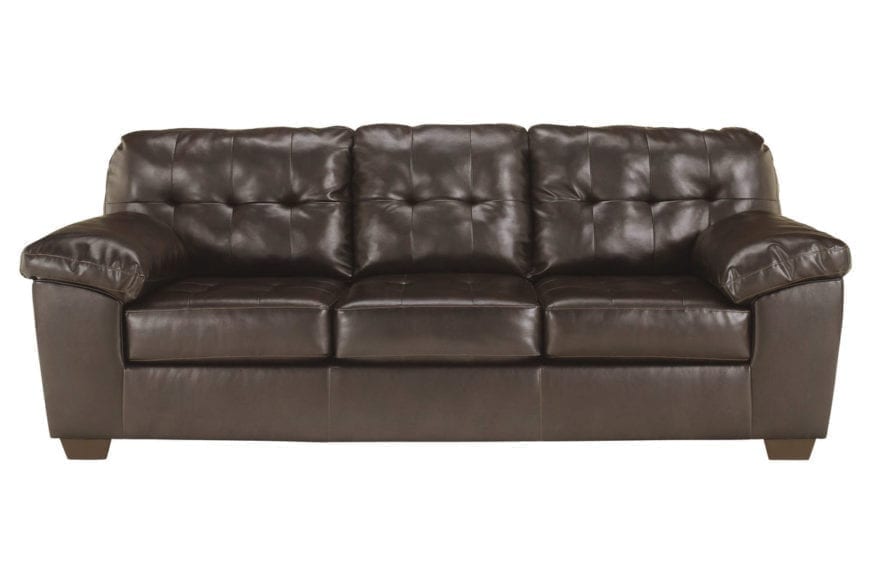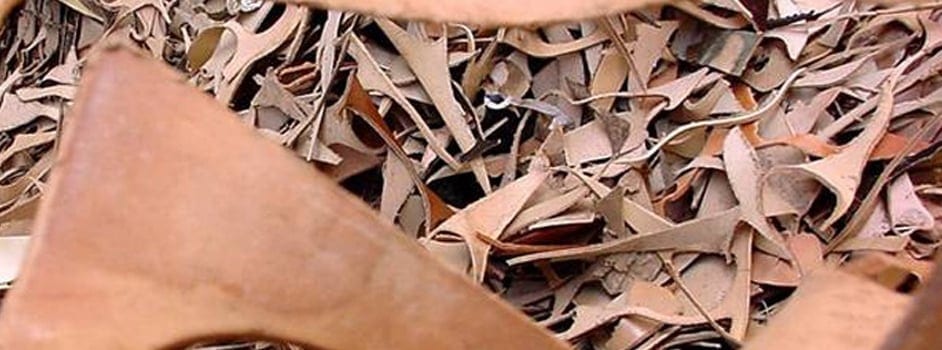Have you ever come across a leather sofa or couch for sale that was so cheap, it looked too good to be true? Even if the item was touted as bonded leather or genuine leather, you should know that not all leather types are equal. Let’s look at just what you’re getting when you purchase a bonded leather good, and whether it’s a good buy or not.
What is Bonded Leather and How Is It Made
Bonded Leather is also called reconstituted leather or blended leather. It can also legally be called genuine leather, real leather, vero cuoio and other similar names indicating it does come from animal hide. However, it is not 100% pure leather; instead, it is made by shredding leather scraps and leather fiber to form a pulp. This is then sandwiched between a fiber cloth and a polyurethane coating. The coating is then embossed with a leather-like grain or texture.
The manufacturing process for bonded leather is very similar to making paper, which illustrates how different it is from making other types of leather.

Quality
Because the natural leather content in bonded leather varies from manufacturer to manufacturer, it is difficult to predict the performance of this type of leather. Some bonded leather is durable and its longevity is comparable to lower-quality genuine leather.
The laws in some countries allow a composition of as little as 20% leather fibers in order to qualify as bonded leather.
Appearance
Bonded leather can be difficult for a novice to tell apart from real leather because it can look and even smell similar. It is available in a wide variety of colors, textures and finishes, due to the synthetic nature of the surface coating. Unlike real leather, it is cool to the touch in winter and warm to the touch in summer. In addition, bonded leather does not develop a patina with age and instead tends to crack and peel due to wear.
Products Bonded Leather Is Commonly Used For
While most often used to make reasonably-priced furniture, bonded leather is also used in bags, book bindings, office supplies, clothing and belts. It is not suitable for high-end or luxury products due to the limited durability it offers.

Advantages of Bonded Leather
Some of the advantages of bonded leather are that it is environmentally friendly since it makes use of scrap leather that would otherwise go to a landfill. It is cheaper than quality leather and comes in a variety of colors and looks to suit every budget and style. Some varieties are quite durable and supple enough for clothing such as jackets.
Disadvantages of Bonded Leather
While bonded leather is definitely cheaper than other leather types, a bonded leather upholstered sofa can be costlier in the long run if you plan to keep using it for a longer duration. Once the leather splits or peels, repairing it is difficult and you may need to reupholster the whole item. So bonded leather is only recommended for items which will be used infrequently.
Another issue besides the limited durability is that it is less breathable and feels sticky during hot weather.
How to Care for Bonded Leather
In order to ensure your bonded leather furniture or other item lasts longer, you need to follow some simple precautions.
To clean the furniture, wipe it down with a clean, damp cloth. Dry it with a clean dry cloth until it dries completely. Remove dust from crannies and seam by dusting regularly. Do not use soaps and abrasive cleaners as they may damage the leather’s surface.
Use a good conditioner to keep it smooth and supple, but first test any product in an inconspicuous place to check for colorfastness. In case of spills, blot up the stains immediately with a cloth. The less time the stain stays on the leather, the easier it is to remove.

Comparison
Bonded leather is often confused with bicast leather, which is made from the innermost layer of animal hide and coated with a layer of polyurethane that is embossed to resemble leather. Both types look similar to real leather and tend to split and crack with time and wear. Both are inexpensive alternatives to real leather and can be used to make a variety of goods.
Another similar material is “PU leather” or Polyurethane leather. PU leather is manufactured by applying a shell coating layer on top of a synthetic polymer blend. Since it contains no natural hide, this material cannot be sold or marketed as leather.
Conclusion
Being less durable and more prone to peeling and cracking over time, bonded leather is not recommended for items which you intend to use frequently and plan to keep for longer periods. However, if you have a low budget and intend to replace the items within a few years, bonded leather articles will suit your needs.
Other Similar Leathers
Other leathers that you may want to check out include:
- Bicast leather
- Artificial leather

